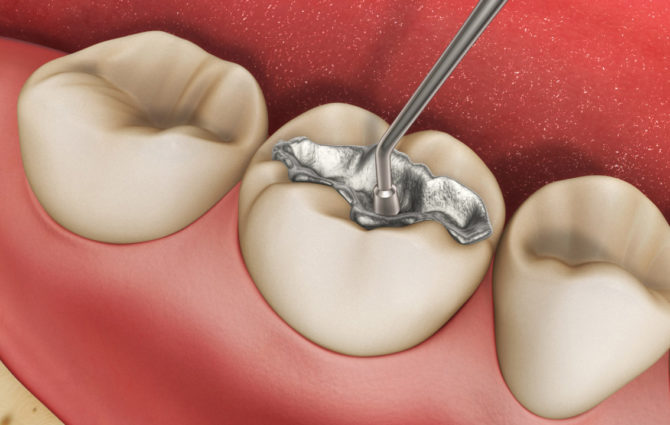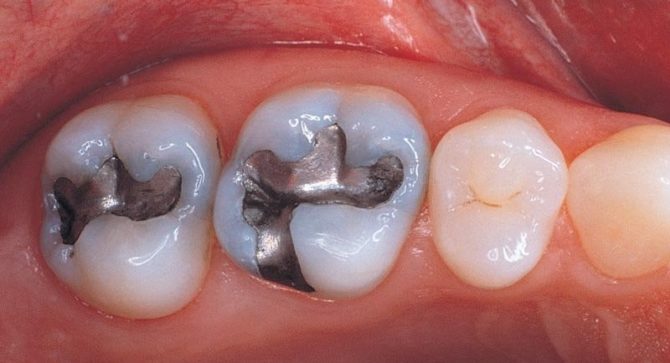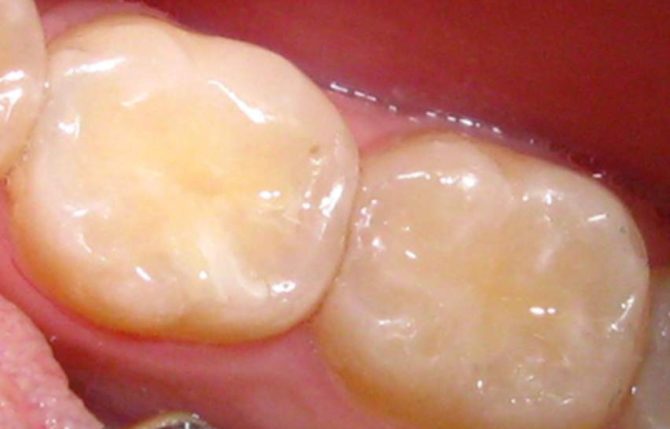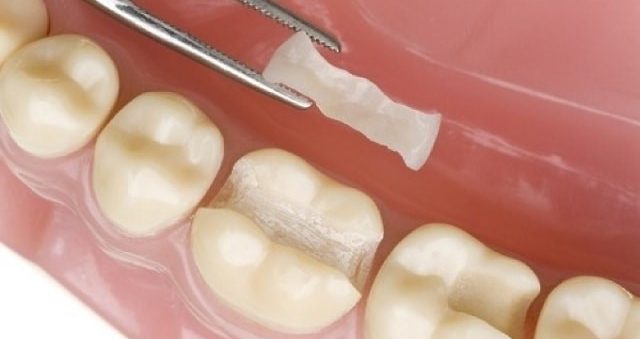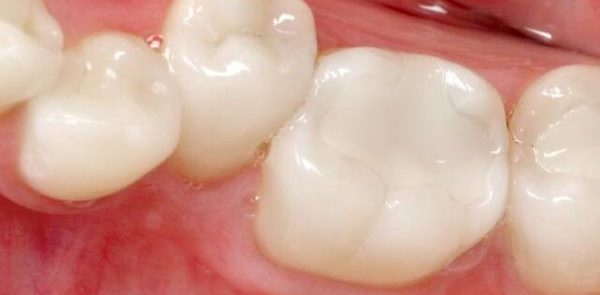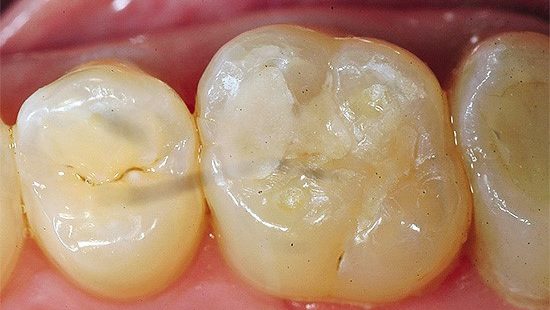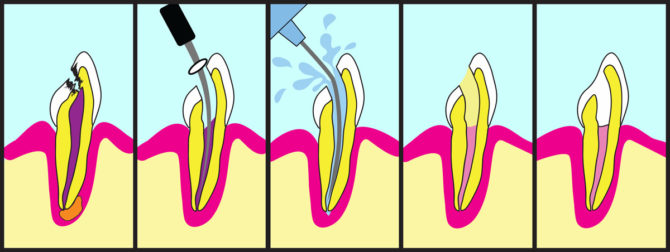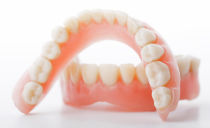Types of dental fillings: which are, which are better to put
Filling is the most common dental service. The technique is actively developing, which is why every year appear new types of dental fillings. Today, the most modern technologies and materials are used in this field of dentistry. Some of them deserve special attention.
Content
What is a dental filling
This term usually means medical material used to fill cavities in a tooth. The filling protects sensitive tissues and prevents the entry of harmful bacteria into the damaged cavity, restores chewing function. Seals are also important for the appearance of our smile, despite the fact that most of the time they are invisible.
All kinds of dental fillings are installed in the following cases:
- After endodontic treatment of caries, pulpitis and other diseases of the oral cavity.
- To prevent the development of caries in children.
- When erasing chewing teeth (molars) in case of violation of their mineralization.
- To make the structure more durable and prevent the destruction of tooth residues, the filling can be placed under the crown.
- After mechanical damage to the molars, in the case of front incisors and fangs, they usually resort to restoration.
- To protect the tooth with prolonged intracanal treatment.
- To shape the molars in order to evenly distribute the load when chewing.
There are different dental fillings. Their classification depends on the filling material and the wearing time.
Varieties of fillings depending on the wearing time
A variety of designs are available to patients. They differ from each other not only in the materials used, but also in terms of wearing. Depending on this product can be divided into temporary and permanent.
Temporary fillings
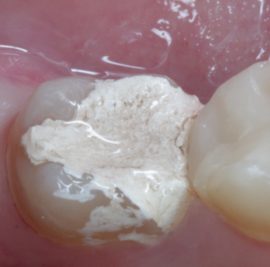 The tab is used to protect the cleaned root canals with long-term treatment, which is carried out in stages. Most often it is used for micro prosthetics, because it takes time to make plastic fillings and ceramic inlays.
The tab is used to protect the cleaned root canals with long-term treatment, which is carried out in stages. Most often it is used for micro prosthetics, because it takes time to make plastic fillings and ceramic inlays.
Such fillings are placed in the treatment of diseases of the oral cavity, which are characterized by inflammation and the development of harmful organisms in soft and hard tissues. The dentist pours an antiseptic composition into the tooth canal, and so that he does not get into the mouth, the canal is closed with material for temporary dental filling.
For temporary filling, a special composition is used, which is called dentin paste. It is resistant to saliva and for some time can perfectly cope with the mechanical stress of chewing food. The product does not look very natural, but in this case it does not matter.
Set the structure for 3-4 days. In rare cases, it can remain for several weeks. The material simply cannot sustain a longer period.
Permanent fillings
The service life of such tabs is calculated in years. Today there are materials that are excellent perform their functions even for decades.
There are much more requirements for a permanent seal:
- The material must be chemically resistant to fluid, mechanical stress and acid-base environment of the oral cavity.
- A minimum percentage of shrinkage during solidification and sufficient ductility to create a mold are required.
- The composition should not change color and stain the tissue around it.
- Material for fillings must be completely safe.
In modern realities, an unremarkable appearance can be added to these conditions. Nevertheless, the tab also performs an aesthetic function, although this is not always especially important.
A variety of formulations are used to make long-wearing fillings. Some of them are already slowly withdrawing from circulation, while others are only conquering this area.
Varieties of fillings depending on the material
If you understand the topic in as much detail as possible, you can distinguish dozens of unique names. But some compositions differ only in the ratio of components, so it is more customary to divide them into groups.
Amalgam
The seal consists of an alloy of mercury, silver, tin and zinc. This medical metal is absolutely safe for human health, and its products are distinguished by the following positive qualities:
- Metal inlays are both durable and ductile, so such fillings are best placed on chewing teeth. The material is easy to shape, and the load on the jaw will be evenly distributed.
- The material has a uniform texture. To make the surface of the seal smooth, it is not even necessary to polish it.
- Metal is not subject to abrasion. For this reason the life of the fillings on the tooth reaches ten years and more.
- Despite the mercury in the composition, the alloy is completely safe. Even if you fill the entire row, the amount of harmful metal will still not exceed the permissible norm.
Such inserts are not used so often. All because of the contrasting appearance: when yawning or laughing, they immediately catch the eye.
Plastic
Such fillings are made from a polymer called acrylic. Usually it is used in prosthetics because of its similarity to natural enamel and its relatively low price. This is where the benefits end.
Often products are used as a temporary measure, if there is simply not enough money for a more advanced version. In all other respects, plastic seals are not doing their best. The material is quickly erased. On molars, it lasts only a few months.
Acrylic has a porous texture. After installation on the plastic deposits accumulate, which then serve as a medium for the growth of bacteria. Not only the filling, but also the tooth suffers from them.
This feature of plastic also affects the appearance of the seal. Even if during the entire service life she “behaves” admirably, she can’t wear it all the time. Material for fillings tends to turn yellowthat will be noticeable to everyone around you when you laugh.
Ceramic
Such a filling is a bit like a crown, but it is more commonly known as a tab for a tooth. The material has several advantages over other options:
- He looks very natural, because completely repeats the color and texture of natural enamel. Because of this feature, even incisors and fangs are sealed in a similar way.
- By strength, ceramics can be compared with a protective layer of our enamel. With injuries in the jaw area, the material falls much more often, rather than breaking.
- The material is not subject to shrinkage and abrasion when chewing. Therefore, such fillings are excellent for restoring the chewing function and appearance of molars.
The main disadvantage of a ceramic seal is its price. Moreover, the material itself is very inexpensive, more will have to pay for the work of a doctor. They make such a filling for a tooth for a rather long time, and it also requires experience and professionalism.
Photopolymer
This may include several compositional compositions. All of them are united by the fact that the material is placed in the root canal in liquid form and solidifies already inside. The polymerization of such substances occurs under the influence of ultraviolet radiation.
Due to its good strength, light fillings can be installed on chewing teeth.At first, they are shrinking. The composites that make up the product, well repeat the appearance of the clove. In the photo and in living life they are invisible. After hardening, the material has a very dense texture, which protects against the accumulation of deposits and the development of bacteria.
Presently composite filling is most actively used in dentistry. With a large number of advantages, it also has an affordable price. Therefore, not only dentists, but also the patients themselves, often opt for this option.
Glass ionomer
Glass ionomer and composite fillings can be combined into one group. Both materials are called cements in dentists because they harden after the root canal closes.
Glass ionomer cement is characterized by the presence of fluorine in its composition. Thanks to this, the possibility of developing caries and other dentin injuries after treatment is practically excluded.
This material is especially popular in pediatric dentistry. Sometimes they chew their chewing teeth even without expanding the root canal just to stop the development of caries. For the same purpose, glass ionomer products are sometimes placed under a dental bridge or a porcelain crown.
Cement fillings on the tooth are not particularly durable. They serve an average of several years and may break due to strong mechanical stress.
What is the process of installing different types of seals similar to?
In all cases, product setup consists of the following steps:
- Removal of damaged tissue.
- Expansion of the root canals.
- Installation of the seal itself.
Most often, filling is used as part of the treatment of caries, therefore, in the vast majority of cases, it begins with the elimination of this ailment. With the help of a drill, a specialist removes all tissues of the tooth, where the disease has already managed to penetrate.
If we are talking about deep caries, they also remove the roots. Otherwise, inflammation and development of pulpitis is possible. Such consequences are characteristic of all types of dental fillings, therefore, it will not be possible to maintain nerve endings.
After depulpation, the specialist expands the tooth cavity somewhat. In this case, even healthy tissues are removed. Work is carried out with the help of a drill and is necessary just to make filling a tooth easier and faster.
Usually, at this time, the specialist still does not know exactly what types of dental fillings will be used. Even if a choice has been made, it can be changed depending on the situation.
It happens that at the beginning of treatment the patient decides to put a light seal. Then it becomes clear that this is impossible, because most of the enamel is damaged, and the ceramic tab will look much better. Be prepared for such unexpected changes.
Further, the work of a specialist depends on the type of permanent filling. The easiest way to do cement structures. It takes less time and does not require much experience or professionalism.
Ceramic and plastic fillings are not immediately placed. It takes time to make them.
How much is the filling
In Moscow, prices for the simplest products start at 400 rubles. Composite fillings can cost up to 2 thousand rubles apiece. Ceramic tabs are most expensive, since they are more related to micro prosthetics. The price of the product does not even depend on the material, but on the complexity of the shape of the seal and the time spent on manufacturing. The harder the job, the higher the cost.
In state clinics, filling is carried out free of charge. Only the most affordable cement materials are used. If you want a better product, you have to pay extra.
Everyone will have to face a seal at least once, so this information is useful to everyone. If you don’t know what dental fillings are, then you simply won’t be able to choose the best option for yourself.

